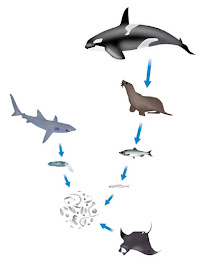Jet-Ski
Jet-Ski is the brand name of personal watercraft (PWC) affected by Kawasaki Heavy Industries, Ltd... The name, however, has become a widespread trademark for any type of personal watercraft. Jet Ski (or Jet Ski) can also specially refer to versions of PWCs with pivoting handle poles known as "stand-ups".
Jet Ski becomes leading colloquial term for stand-ups because, in 1973, Kawasaki was in charge for a limited production of stand-up models as intended by the recognized inventor of jet skis, Clayton Jacobsen II. In 1976, Kawasaki then began mass manufacture of the JS400-A. JS400s came with 400 cc two-stroke engines and hulls based upon the previous incomplete release models. It became the harbinger of the achievement Jet-Skis would see in the market up through the 1990s.
In 1986 Kawasaki broadened the world of Jet Skis by introduce a two person representation with lean-in "sport" style handling and a 650cc engine, dubbed the X-2. Then in 1989, they innovate their first two traveler "sit-down" model, the Tandem Sport (TS) with a step-through seating area.
In 2003, Kawasaki famous the Jet Ski brand by release a special 30th anniversary edition of its current stand-up model, the SX-R, which has seen a renewal of interest in stand-up jet skiing. The X-2 has also been efficient, based on the SX-R platform and re-released in Japan. Kawasaki continues to produce three models of sit-downs, as well as many four-stroke models.
Sunday, May 27, 2007
Sunday, May 20, 2007
Kerala houseboats
The houseboats in Kerala, south India, are huge, slow-moving, foreign barges used for leisure trips. They are a reworked model of Kettuvallams (in the Malayalam language, Kettu means "tied with ropes", and vallam means "boat"), which, in earlier times, were used to carry rice and spices from Kuttanad to the Kochi port. Kerala houseboats were measured a suitable means of transportation.
The fame of Kettuvalloms has returned in the function as major tourist attractions. Many come across the Kettuvallom an ideal means of explore the beauty of the Kerala backwaters.
Such a houseboat is about 60 to 70 feet (about 18 to 21 meters) long and concerning 15 feet (about 5 meters) wide at the middle. The hull is made of wooden planks that are detained together by ropes of coconut fiber; the usual wood is 'Anjili'. The roof is completed with bamboo poles and palm leaves. The exterior of the boat is tinted with protective coats of cashew nut oil.
The houseboats in Kerala, south India, are huge, slow-moving, foreign barges used for leisure trips. They are a reworked model of Kettuvallams (in the Malayalam language, Kettu means "tied with ropes", and vallam means "boat"), which, in earlier times, were used to carry rice and spices from Kuttanad to the Kochi port. Kerala houseboats were measured a suitable means of transportation.
The fame of Kettuvalloms has returned in the function as major tourist attractions. Many come across the Kettuvallom an ideal means of explore the beauty of the Kerala backwaters.
Such a houseboat is about 60 to 70 feet (about 18 to 21 meters) long and concerning 15 feet (about 5 meters) wide at the middle. The hull is made of wooden planks that are detained together by ropes of coconut fiber; the usual wood is 'Anjili'. The roof is completed with bamboo poles and palm leaves. The exterior of the boat is tinted with protective coats of cashew nut oil.
Sunday, May 13, 2007
Gondola
It is a customary Venetian rowing boat. Gondolas were for centuries the chief resources of transportation within Venice and still have a role in public transport, serving as traghetti (ferries) over major canals.
The gondola is propelled by an oarsman (the gondolier) who stands opposite the bow and pushes, rather than pulls, a single oar. Contrary to accepted belief the gondola is never poled, the waters of Venice being too deep for that. A gondola for passengers may have a small open cabin, for their defense next to sun or rain. A sumptuary law of Venice essential that gondolas should be decorated black, and they are frequently so painted now.
It is predictable that there were several thousand gondolas during the 18th century. There are a few hundred nowadays, most of which are for hire by tourists, while a few serve as traghetti or are in confidential ownership and use.
It is a customary Venetian rowing boat. Gondolas were for centuries the chief resources of transportation within Venice and still have a role in public transport, serving as traghetti (ferries) over major canals.
The gondola is propelled by an oarsman (the gondolier) who stands opposite the bow and pushes, rather than pulls, a single oar. Contrary to accepted belief the gondola is never poled, the waters of Venice being too deep for that. A gondola for passengers may have a small open cabin, for their defense next to sun or rain. A sumptuary law of Venice essential that gondolas should be decorated black, and they are frequently so painted now.
It is predictable that there were several thousand gondolas during the 18th century. There are a few hundred nowadays, most of which are for hire by tourists, while a few serve as traghetti or are in confidential ownership and use.
Subscribe to:
Posts (Atom)



